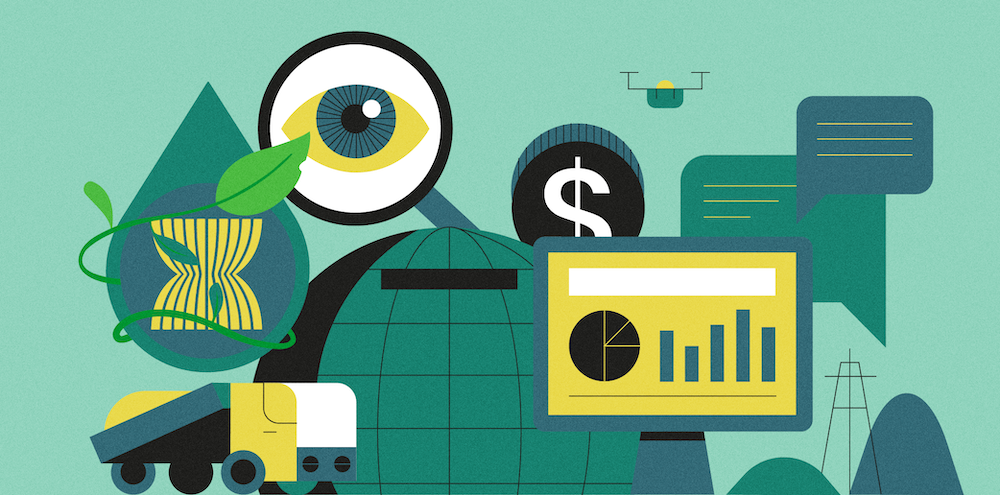Vietnam is taking a page from California and the EU to craft a landmark cap-and-trade program that will cover major emitters from Panasonic to Nestlé in a country that has become one of the world’s most important manufacturing hubs.
The government is now deciding on the size of the caps it will allow for companies’ greenhouse gas emissions, which have risen as supply chains relocate to Vietnam and the country builds more coal and gas plants, and the penalties for those who exceed them. But environmentalists warn that letting companies trade allowances—and eventually buy carbon credits—will only enable pollution.
Hanoi this year drew up a list of 1,912 groups, including Seoul Semiconductor, scooter maker Piaggio, and food conglomerate Masan, that must conduct an inventory of their emissions and make a plan to reduce them. The fast-industrializing country is likely to start with domestic cap-and-trade, whereby the market will set the price of a ton of carbon before linking to an international system open to more companies that want to buy carbon offsets. The government is expected to release its next set of directions on the initiative, a circular, by the end of 2022.
“It is important not to give away too many allowances at the beginning, as that may deter trading from happening, as was the case in the EU,” warned lead environmental economist Muthukumara Mani at the World Bank, an adviser to Vietnam on carbon markets.
He told Nikkei Asia the system will push “businesses to switch to cleaner, low-carbon, and efficient technology. It will do so by making pollution costly.”
Foreign manufacturers said they are figuring out how to comply with the pending cap-and-trade system, which a ministry of industry official told Nikkei will take about five years to develop.
Apple, Samsung, Target, Mulberry, and others lobbied Vietnam to let them buy solar power directly from producers instead of the outdated state grid. The change would help cut emissions but has not been legalized.
Nestlé, the world’s biggest coffee buyer in the world’s biggest robusta exporter, turns coffee waste into biofuel, though people disagree on the climate impact of burning biofuel. The company also said it is turning to regenerative agriculture, the latest buzzword for practices like planting cover crops that suck up carbon. The food giant aims to reach net-zero emissions by 2050, the same target set by Vietnam.
“We have a clear road map to achieve this target,” Nestlé Vietnam told Nikkei. “This has been cascaded to all markets where we are present.”
Mercedes-Benz set a closer date: 2039. “We will collaborate with the coming detailed guidelines from relevant authorities to fulfill the milestones required,” a company representative told Nikkei.
Panasonic expressed support for the regulation, while brewer Carlsberg said it is actively preparing for implementation.
Vietnam says it is fourth in the world in terms of the number of projects under the Clean Development Mechanism (CDM), a U.N. carbon-offset program whereby developed countries can get credit for helping develop emissions-cutting projects, such as hydroelectric dams, in developing countries.
But Greenpeace calls these and other offsets an accounting scam, saying countries and companies should quit fossil fuels to reach “real zero,” not net-zero.
“Offsetting smothers ambition and gives polluters a way to avoid making genuine, substantive, timely emissions cuts,” Greenpeace International executive director Jennifer Morgan said in November. “It’s like saying you’re going on a diet, but you keep eating cake while paying someone else to eat lettuce.”
Vietnamese officials, whose cap-and-trade research has included a trip to the California Environmental Protection Agency, say foreign donors must help the country fulfill pledges made in Paris and Glasgow.
Its carbon market program will cover six industries: energy, transportation, waste, land use, industrial processes, and construction.
“Vietnam will need new financial resources, appropriate human resources, and, particularly, international support,” Vu Ngoc Anh, the construction ministry’s science, tech, and environment director, said at a U.K. clean growth forum last month.
Successfully cutting pollution will cost money, but so could failure. The World Bank attributes just 0.8% of global emissions to Vietnam but says trade with its second-biggest export market, the European Union, is at risk if it doesn’t decarbonize. Brussels will tax imports based on their emissions, a plan also being considered in the U.S., the largest buyer of Vietnamese goods.
Energy specialist Thi Nguyen does not think Vietnam’s carbon credits will give companies an excuse to pollute because the credits are limited.
“This system gives businesses a strong incentive to save money by cost-effectively cutting emissions,” he told Nikkei.
This article first appeared on Nikkei Asia. It has been republished here as part of 36Kr’s ongoing partnership with Nikkei.

